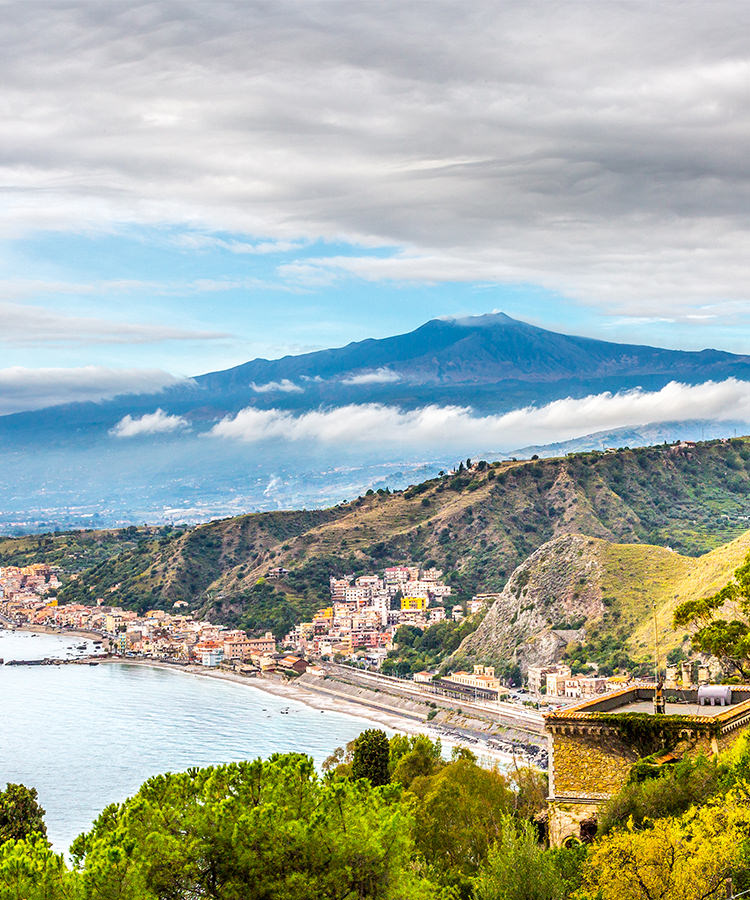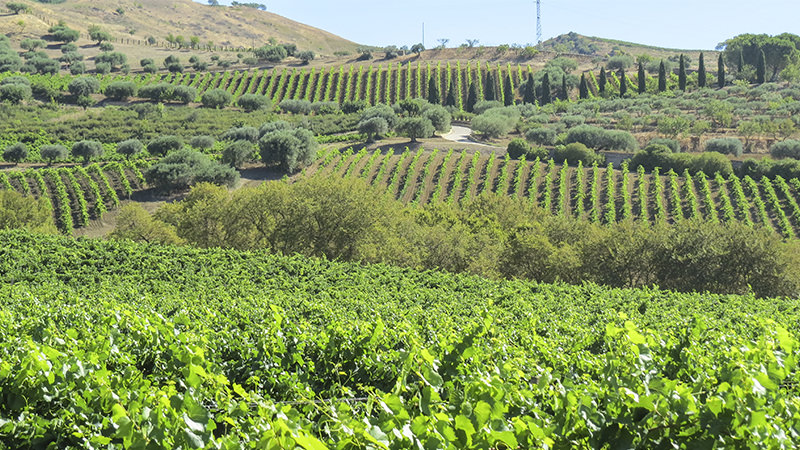What’s large, in-charge, and home to some of the greatest wines in southern Europe? Welcome to Sicily, home of orange trees, olive groves, and more vineyards than you could possibly imagine. While we might think of Sicily as being small, it’s actually the largest island in the entire Mediterranean Sea, giving way to a serious array of grape-growing opportunities. With various terrains, topographical diversity, and that little old volcano on the eastern end of the island, there’s really no doubt about it; when it comes to wine, Sicily can do it all.
Winemaking in Sicily has some seriously deep-running roots, with production on the island remaining steady for over 3,000 years. According to Wines of Sicily, Phoenicians and Romans began trading Sicilian wines because of their powerful and unique flavor profiles. Today, those same characteristics can definitely be found in the wines of the island, though winemaking has gone to a whole ‘nother level. Both boisterous and lighter-bodied reds are widely available, along with savory rosés, crisp whites, and a pretty significant amount of dessert wine. No matter what you prefer, Sicily’s got something for you.
Wine consumers tend to be most acquainted with Sicilian reds — and for a good reason. Dry, hot summers all across the island allow for some serious Nero d’Avola production. Considered to be the island’s flagship variety, this “Black of Avola” grape creates medium- to full-bodied reds, with abundant, ripe black fruit and peppery flavors. The island’s only DOCG, Cerasuolo di Vittoria, must have at least 50 to 70 percent Nero d’Avola in each bottle.
However, as you move to the eastern end of the island, things start to change. The region of Etna is strongly influenced by the powerhouse volcano at the appellation’s center, creating an abundance of microclimates within a small vicinity. Being that Etna is the second-largest volcano on the planet, it’s a no-brainer that its lava-guzzling, smoky impact on the land is strongly evident. Volcanic, nutrient-rich soils dominate the region, with lava and ash making up the unique terrain. The red grapes Nerello Mascalese and Nerello Cappuccio work in tandem to create the famed wines of Etna Rosso, which are often compared to New World Pinot Noir. For a stark comparison, taste alongside a bottle of Sicilian Frappato, an indigenous red variety known for fun, fruit-forward (and honestly, pretty chuggable) bottles. For lovers of light reds (especially served with a slight chill), these wines are for you.
And the best way to combat the island’s consistent heat? With a bottle (or few) of refreshing white, of course. Despite what the island’s hot temperatures may lead you to believe, producing crisp, zesty whites is definitely possible. Thanks to high elevations and cooling sea breezes, white wine grapes are able to maintain loads of acidity. Carricante and Catarratto are the two big players in Etna Bianco, with a required minimum of 60 percent of the former. Throughout the rest of the island, Grillo and Inzolia are used to produce clean, tropical fruit-driven whites, and are often blended with Chardonnay.
For those with a sweet tooth, Sicily is your spot — and we’re not talking cannolis and pastries, though they have those, too. The answer to all of your sugar-driven cravings is found right in your glass! The sweet wines of Sicily definitely don’t get the love they deserve, but are some of the most interesting bottles on the island. The most famed Sicilian wine of them all, Marsala, had a much better reputation back in the day. Sweeter examples were compared to port and sherry, the fortified wines of Portugal and Spain. In the mid-20th century, Marsala became reduced to simple cooking wine, a serious insult to these complex and textured fortified bottles. Today, Marsala is classified under three categories: Oro, Amber, and Rubino, with Fine (one year), Superiore (two years), Superiore Riserva (four years), and Vergine (five years) signifying their minimum age. Nutty flavors of brown sugar, apricot, and dried fruits dominate these unique (and affordable!) bottles. Next time the craving for port strikes, spring for a sweet Marsala instead.
And the dessert wines don’t stop there. For a truly one-of-a-kind experience, grab a bottle of Zibibbo. The variety is used to produce wines similar to Marsala, though the grapes are partially distilled, rather than fortified. In addition, grapes used for Zibibbo production are sun-dried (appassimento) for the sake of concentrating their sugars. The grape has often been compared to Muscat (Moscato), though don’t worry — Sicily’s also got a healthy planting of that, too.
Whether white is your go-to, red screams your name, or sweet wine is the only thing you want in your glass, sticking with Sicily is a pretty safe bet for wine lovers of all palates. And if you get lucky enough to make it to the island for yourself, you’ll most likely find some obscure variety that tickles your fancy along the way. Pair with a Sicilian cannoli for maximum enjoyment — no matter what your wine choice might be.

